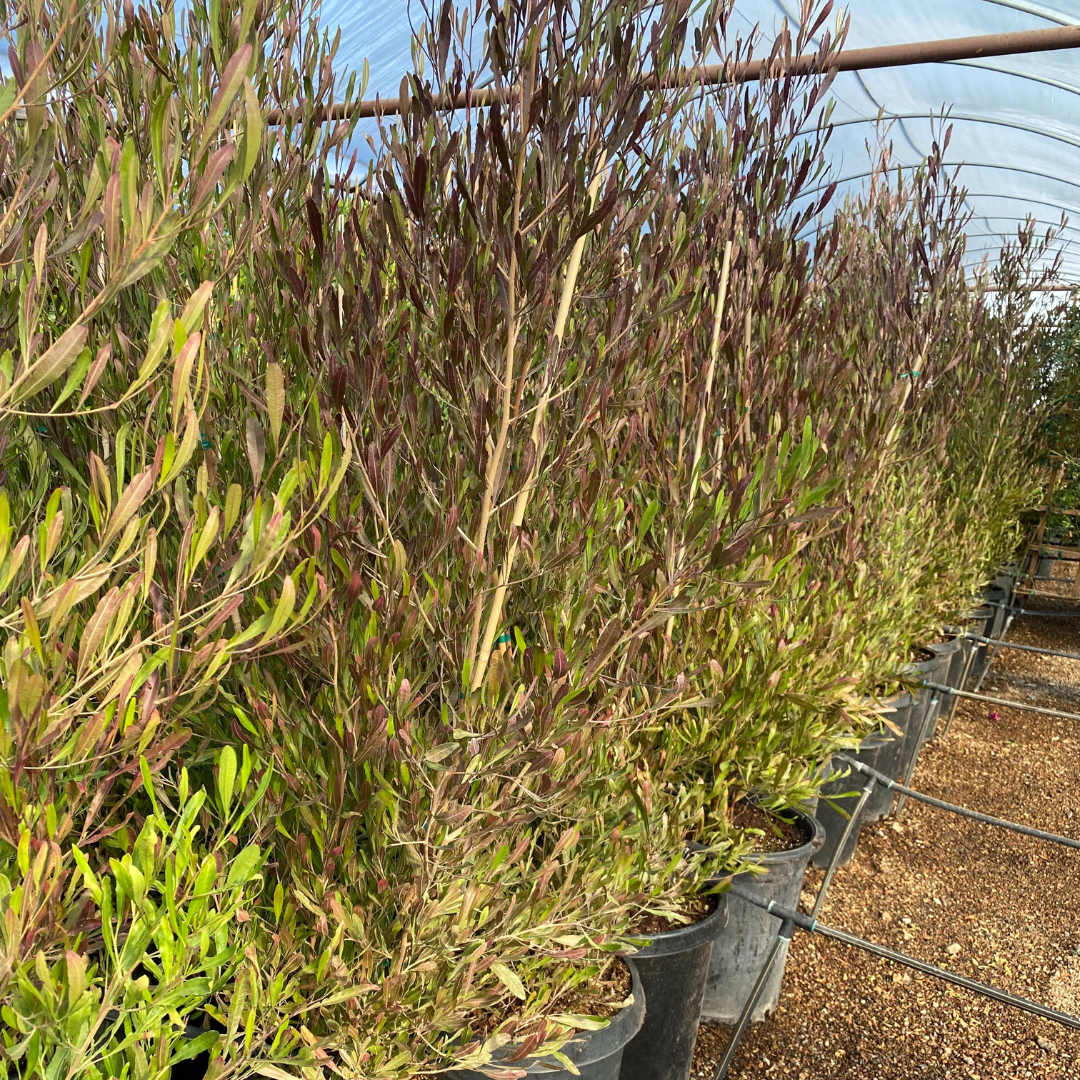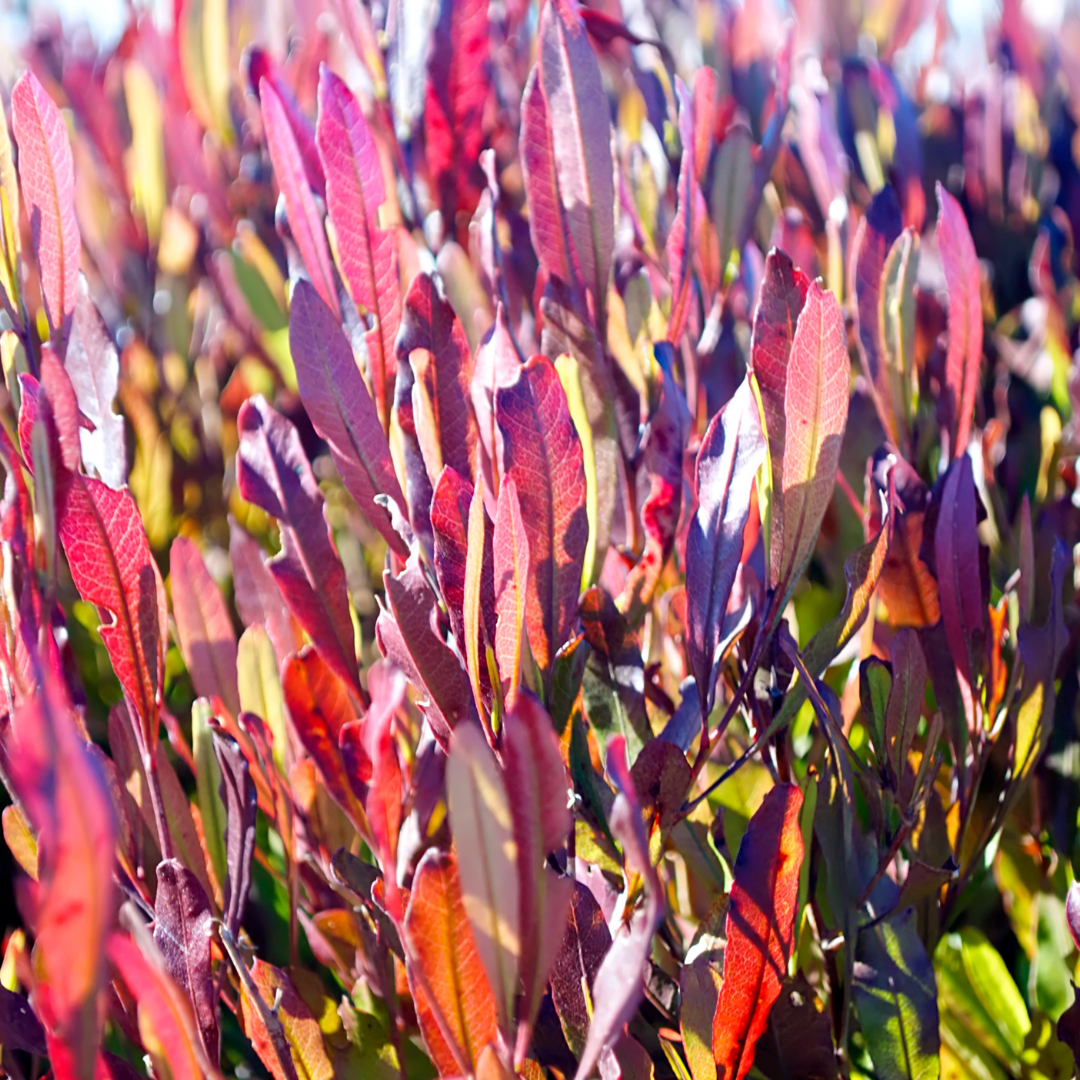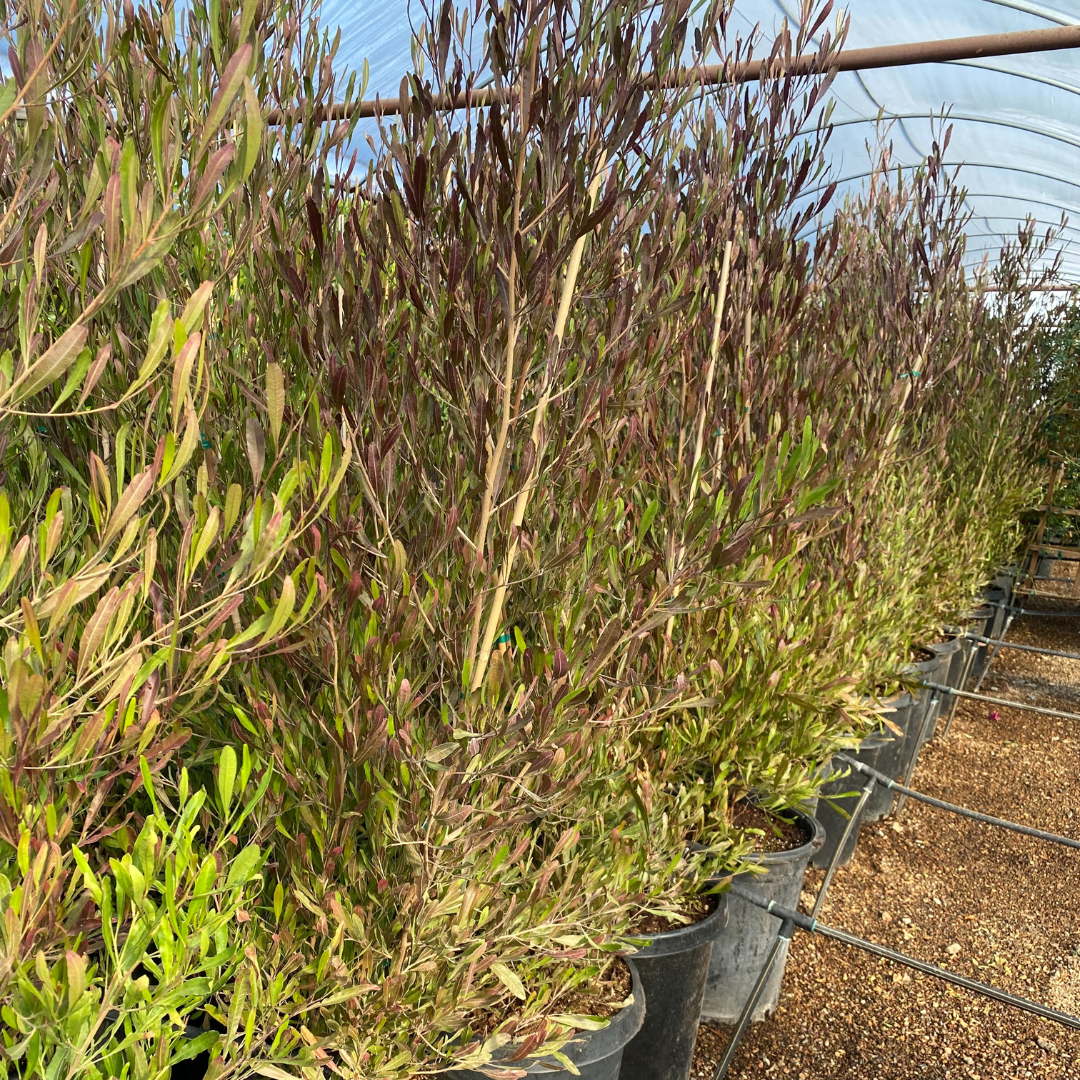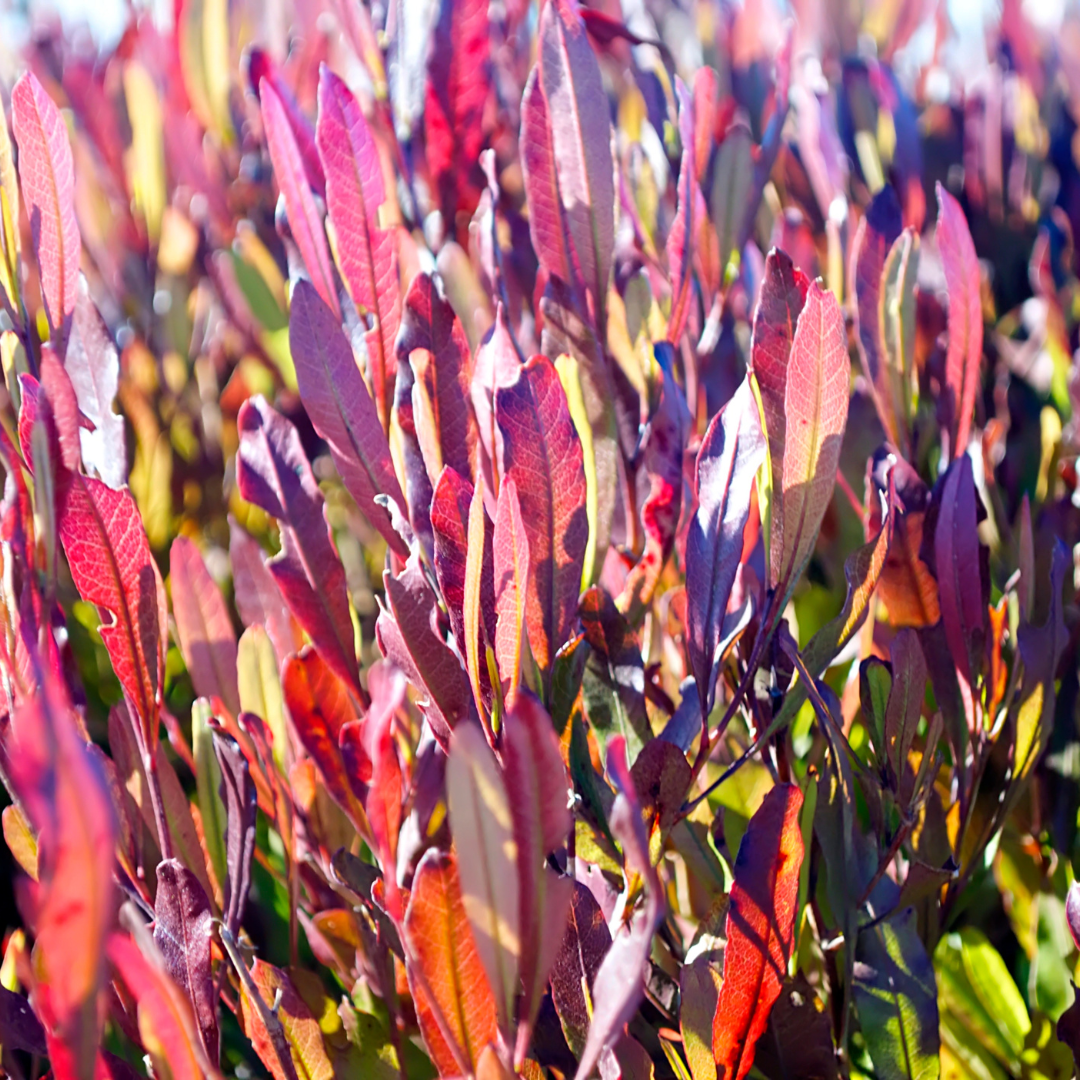My Store
Purple Hopseed
Purple Hopseed
Couldn't load pickup availability
Plant Type: shrub
Plant Height: 10-15 feet
Spread: 6-10 feet
Flower Color:
Sun Exposure: Full Sun or Partial Shade
Purple Hopseed (Dodonaea viscosa 'Purpurea'): A Colorful and Drought-Tolerant Shrub for Versatile Landscaping
The Purple Hopseed, or Dodonaea viscosa ‘Purpurea’, is an evergreen shrub known for its vibrant, purple to bronze foliage that adds a rich splash of color to landscapes. Native to Australia, New Zealand, and the Pacific, this plant is well-loved for its adaptability and year-round visual appeal.
Key Features of Purple Hopseed
- Colorful Foliage: Lance-shaped leaves that shift from purple to bronze depending on sunlight, providing year-round interest and a stunning accent in garden designs.
- Papery Seed Capsules: Following its small, inconspicuous flowers, Purple Hopseed develops unique seed pods that resemble hops, adding decorative interest in the fall and winter.
- Size and Form: Typically grows 6 to 15 feet tall and wide, making it suitable for hedges, privacy screens, or as a specimen plant.
Ideal Growing Conditions
- Sunlight: Thrives in full sun for the most vibrant foliage color but can tolerate partial shade.
- Soil: Prefers well-draining soil and can adapt to a variety of soil types.
- Water Requirements: Drought-tolerant once established, making it ideal for water-wise landscapes.
Landscaping Uses
- Hedges and Privacy Screens: The shrub’s moderate size and dense growth make it perfect for privacy hedges or windbreaks.
- Specimen Plant: Use as a focal point or accent plant to bring rich color to garden beds.
- Mixed Borders: Pairs beautifully in borders with other low-water plants for added texture and contrast.
Care Tips
- Watering: Moderate watering during establishment; minimal watering is needed once mature.
- Pruning: Regular pruning encourages dense, bushy growth and helps maintain size and shape, enhancing its architectural appeal in the garden.
Summary
Purple Hopseed is a standout choice for gardeners looking to add color, texture, and low-maintenance beauty to their landscapes. Its combination of drought tolerance, ease of care, and year-round color make it a valued addition to both residential and commercial gardens. Whether used as a hedge, a specimen plant, or part of a water-wise garden, Purple Hopseed provides a striking and practical solution for diverse landscaping needs.
Three Timbers Installation Guide (Feel Free to Follow): Purple Hopseed
Planting Guide:
- Location: Full sun (at least 6 hours of direct sunlight for optimal growth)
- Soil: Well-drained, loamy or sandy soil (slightly acidic to neutral soil preferred)
- Spacing: Space plants 4-5 feet apart for a dense, bushy growth habit
- Planting Depth: Plant at the same depth as the root ball, ensuring the top of the root ball is level with the surrounding soil surface
- Support: Purple Hopseed is a shrub that requires no staking and grows upright with a spreading habit
Watering Guide:
Watering After Planting:
- Initial Watering: Water thoroughly immediately after planting to saturate the root ball and surrounding soil
- Frequency: Water every 4-5 days for the first 2-3 weeks to help establish the root system
- Watering Amount: Provide 2-3 inches of water per session for deep watering
When is the Plant Established?
- Timeframe: Purple Hopseed is considered established after 3-4 months when the roots have spread into the surrounding soil
Watering Once Established:
- Summer: Water every 7-10 days during the hotter months. If temperatures exceed 100°F, increase watering to every 5-7 days. Provide 2-3 inches of water per session.
- Winter: Water every 3-4 weeks during the cooler months, depending on rainfall.
Drip Irrigation Setup:
- Placement of Emitters: Place the drip emitters 12-18 inches away from the base of the plant for deep watering
- Flow Rate: Use emitters with a flow rate of 1-2 gallons per hour
- Number of Emitters: 1 emitter per plant for even watering distribution
- Adjusting Frequency: In summer, increase watering to every 5-7 days. In winter, reduce to every 3-4 weeks
Share














